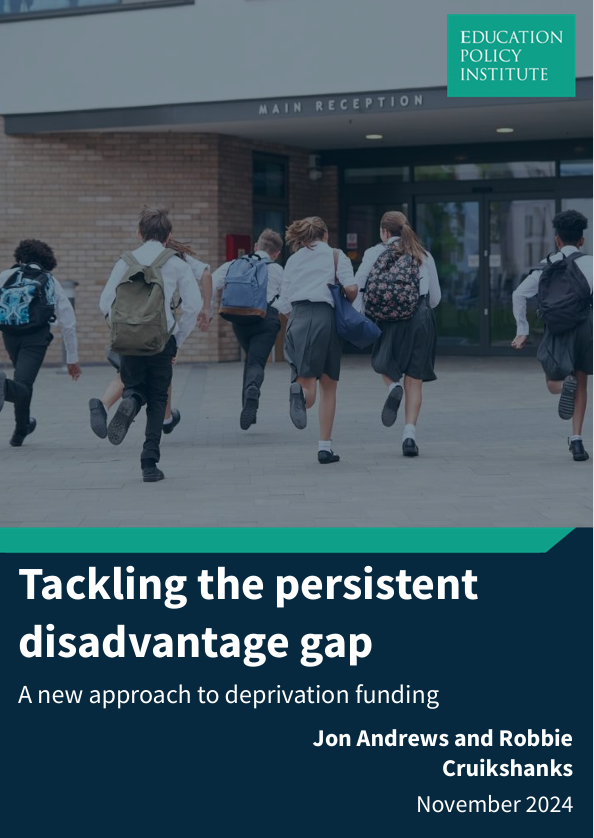⏱️ Estimated Read: 3 min
A new report by Education Policy Institute (EPI) sets out a fresh approach to school funding that would target greater support towards persistently disadvantaged pupils. This group, who have been eligible for free school meals for 80 per cent or more of their time in school, are significantly behind their peers in educational attainment but this is not currently recognised by the school funding system.
The report finds that:
- There is a wide attainment gap between persistently disadvantaged pupils and their non-disadvantaged peers. In 2023, these gaps were equivalent to nearly a year of learning at the end of key stage 2 and nearly two years by the end of key stage 4 – a gap that is wider than at any point at which we have measured it.
- The current school funding system in England, which includes the National Funding Formula (NFF) and the Pupil Premium, does not differentiate between persistent and short-term disadvantage. This means that persistently disadvantaged pupils, despite their greater needs, do not receive additional targeted funding.
- By 2028/29, primary schools are projected to have 200,000 fewer pupils, presenting an opportunity to rethink how resources are distributed. Instead of banking the savings (estimated at £750 million), the Treasury could reinvest some of these funds to support persistently disadvantaged pupils whilst using the remainder to deliver wider real terms uplifts and support the system as pupil numbers decline.
Recommendations:
- Prioritise targeted funding for persistently disadvantaged pupils: The report highlights the importance of directly supporting those pupils most at risk of falling behind. Persistently disadvantaged pupils require additional resources that go beyond the current broad definitions of disadvantage used in the NFF and Pupil Premium.
- Invest £640 million a year in targeted funding: The DfE should allocate £640 million from the savings made by falling pupil numbers to reverse real terms cuts in the Pupil Premium and also target additional funding specifically for persistently disadvantaged pupils through an enhanced Pupil Premium. This enhanced premium would be worth a further £308 per primary persistently disadvantaged pupil and £255 per secondary persistently disadvantaged pupil. This funding could be phased in gradually to ensure affordability over the spending review period.
- The recommended additions of £308 for each persistently disadvantaged primary pupil and £255 for each persistently disadvantaged secondary pupil are relatively modest in scale given the overall value of the pupil premium. They have been set so as to be affordable within existing overall expenditure but should be considered a minimum given that existing funding has not been sufficient to narrow the attainment gap.
- Clear and transparent funding: To ensure clarity for schools, additional funds should be distributed through Pupil Premium as opposed to the National Funding Formula. The DfE should directly communicate how any changes will affect schools, particularly in terms of how additional funds will be distributed to persistently disadvantaged pupils.
You can download and read the full report here.


